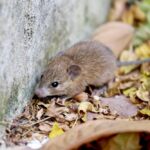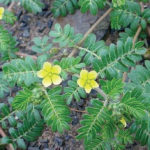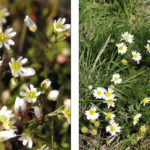Reading Time: 4 minutes Compare Alberta grasshopper survey maps from the past two years and one thing becomes clear: If you had grasshoppers last year, there’s a good chance you will this year, too — and likely in higher numbers. “When you look at the map from 2021 and compare it to the survey that was done last year, […] Read more

The autumn weather was lovely — especially for grasshoppers
Those areas that had the pests last year will likely see more this year, but there are ways to reduce their numbers

Rodent poisons allowed on B.C. farms during temporary ban
British Columbia has temporarily banned a stronger class of rodent poisons pending a review of their effects on non-target wildlife, but farm uses will be exempt. The province on July 21 announced an 18-month prohibition on sales and use of second-generation anticoagulant rodenticides (SGARs). The second-generation products are “more powerful” than the previous generation and […] Read more

New insect expert introduces himself and advises on key pests for 2020
Cabbage seed pod weevils, bertha army worms and pea leaf weevils the insects to watch for in 2020
Reading Time: 3 minutes The province has gained one new entomologist but has lost its best-known bug specialist. Boyd Mori, a new assistant professor in the University of Alberta’s agriculture department, paid tribute to provincial insect management specialist Scott Meers in his presentation at FarmTech — and urged his audience to lobby the government for a replacement. “Scott Meers […] Read more

Phase-out of strychnine proposed
Reading Time: < 1 minute Health Canada is proposing to end the use of strychnine for killing ground squirrels. The proposal comes out of a scientific review of the poison, the federal department said. “An evaluation of available scientific information confirmed that there are risks of concern for non-target organisms, including species at risk, for products registered to control ground […] Read more

Website identifies your insect friends
WGRF works with Prairie Pest Monitoring Network to develop online and social media sites
Reading Time: < 1 minute Not all heroes wear capes. That’s the message behind a new communications campaign to increase awareness of some unsung heroes — beneficial insects. Recently launched by Western Grains Research Foundation (WGRF), the ‘Field Heroes’ campaign encourages growers and agronomists to consider beneficial insects in crop production recommendations and decisions. “Beneficial insects play a vital pest […] Read more

Keep watch for this potential new invader
Noxious Weeds: Puncturevine
Reading Time: < 1 minute So far uncommon to Alberta, puncturevine has all the makings of a potential headache to you and me, alike. What started as an annual herb in southern Europe has started spreading into Canada (in British Columbia and Ontario). Like most other weeds, this plant prefers areas of disturbed, bare ground and grows as a summer […] Read more

Know your enemy and its destructive potential, says provincial crop specialist
There’s a critical window for controlling weeds, but it depends on both the crop and the threat posed by individual species
Reading Time: 2 minutes All crops have a critical weed control period when they are most susceptible to significant yield loss from weed competition. The critical weed control period for canola is around 17 to 38 days after emergence. Peas can be as early as two weeks after emergence. “Other, more competitive crops, like the cereals, have a less […] Read more

Don’t be fooled by this weed’s pretty flower
Noxious weeds: Field scabious
Reading Time: < 1 minute Field scabious was introduced as an ornamental from Europe and is now taking over roadsides and pastures. It can be found throughout central Alberta and has the ability to invade even undisturbed plant communities, such as hayfields. Once established it is very difficult to control. Flowers can be a purple- to blue-coloured clustered head, resembling […] Read more

Concerned about the upcoming phase-out of Imidacloprid?
Health Canada plans to ban the neonicotinoid in three to five years, but is first consulting farm groups and growers
Reading Time: 2 minutes Neonicotinoids could be harmful to aquatic insects — and that has sealed the fate for one version of the pesticide. Following a review, Health Canada’s Pest Management Regulatory Agency (PMRA) has proposed phasing out Imidacloprid over the next three to five years. “Our re-evaluation found no risk for human health,” said Scott Kirby, director general […] Read more

Learn about the good bugs
Reading Time: < 1 minute A March 23 workshop will address how biocontrols can fit into an integrated pest management plan to help in greenhouse growing operations. “Biologicals are huge right now in greenhouse production and we’re seeing people introduce them and monitor them carefully for pests but at the same time aren’t quite sure where to take it from […] Read more

